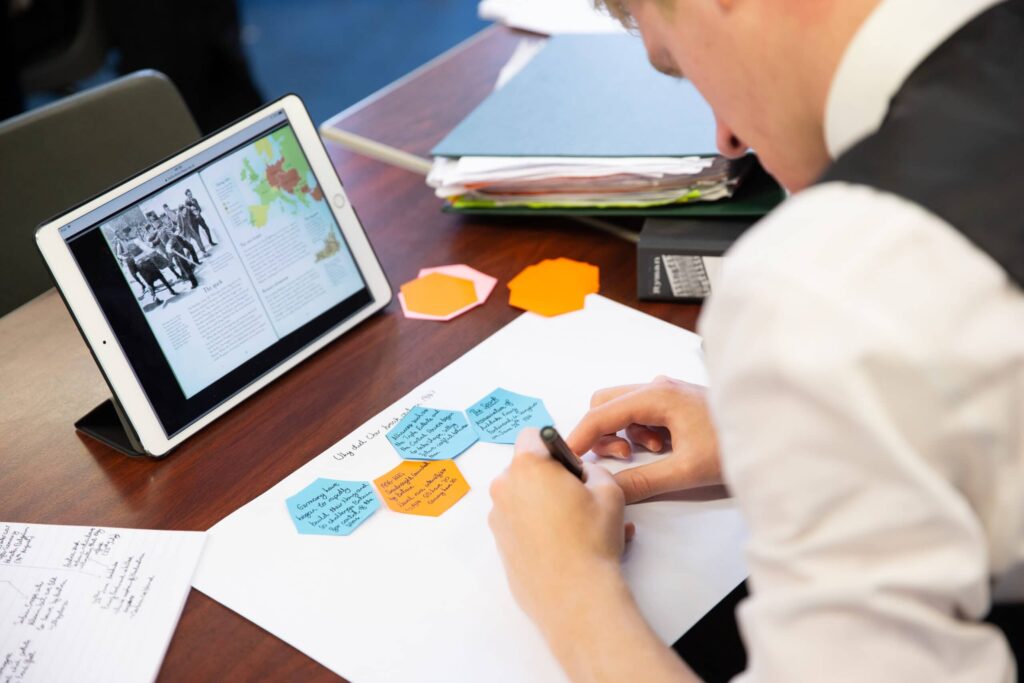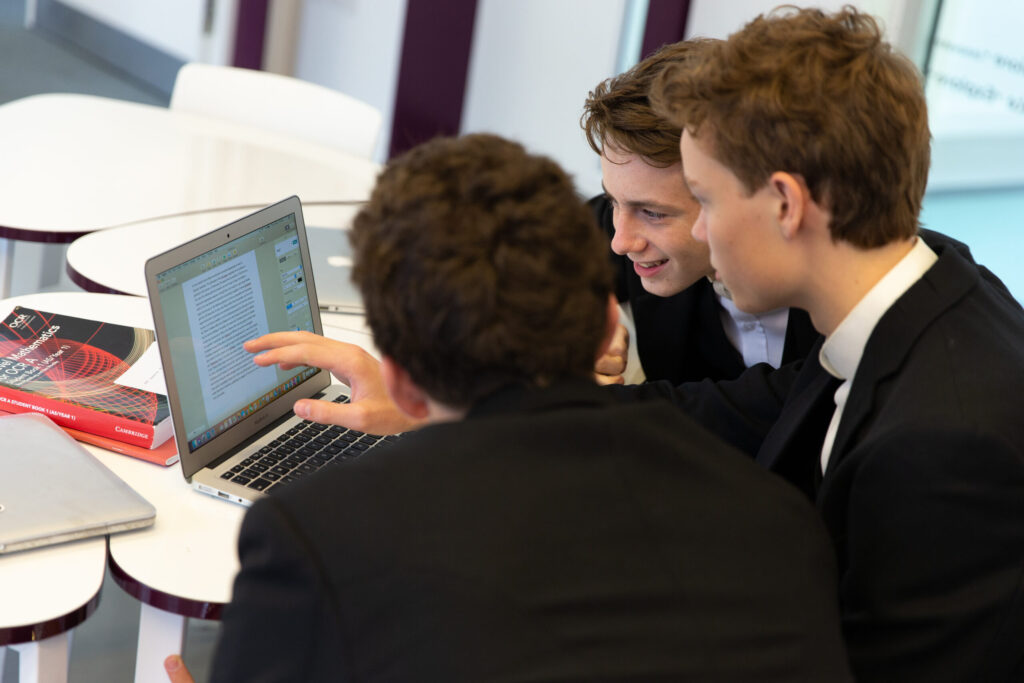This week’s blog post is by Vanessa Kurdi, PhD. Kurdi is a Postdoctoral Research Fellow at the University of Reading and a psychologist who gave a webinar for CIRL earlier on this week. You can listen to the full webinar here.
Teachers’ social and emotional skills are becoming increasingly recognised as playing a central role in students’ schooling experience (e.g., Allen et al., 2020; Nathanson et al., 2016; Wink et al., 2021). How teachers interact with students is important to the development of warm relationships, the support of students’ motivation, and the setting of an emotionally safe environment. A key skill teachers can develop to enable these positive outcomes is empathy.
What is Empathy?
Empathy is the ability to understand and have an emotional resonance with others’ perspectives and communicate that understanding (Davis, 1983; Haynes & Avery, 1979). Humans understand each other through two processes: affective empathy and cognitive empathy.
- Affective empathy refers to the emotional reaction we have when we take someone else’s perspective. For example, when we see someone cry in front of us, we can feel in our bodies their sadness, in addition to our own feelings, such as worry for them.
- Cognitive empathy is our ability to take someone else’s perspective and understand their thoughts and emotions. It is how we identify and interpret the specific emotions a person may be feeling, such as sadness, and the reason for these emotions, such as a loss in their family.
Beyond affective and cognitive processes, empathy also includes a behavioural component that captures how we communicate our understanding back to the person through actions.
The Importance of Empathy with Students
Teachers’ understanding of their students’ perspectives and their communication of that understanding has a strong influence on their teaching approach and how they interact with students. Teachers who display more empathy generally develop better positive relationships with students and develop their practice so that it is more socially and culturally sensitive (Abacioglu et al., 2020; Barr, 2011; McAllister & Irvine, 2002). Empathy is also particularly relevant for classroom behaviour management. In a study with elementary school teachers, those who showed more cognitive empathy were more likely to see their most challenging students in a positive light, have more nuanced interpretations of their behaviours, and develop a closer relationship with these students compared with teachers with less cognitive empathy (Wink et al., 2021). Teachers with more cognitive empathy also showed more competence in handling problem behaviours; used more effective problem-solving strategies; and reported lower levels of job burnout (Wink et al., 2021). Finally, teachers’ empathy skills have been identified as one of the most important practices to support students’ academic success and engagement, as well as their mental health (Cornelius-White, 2007).
Strategies to Empathise with Students
Imagine the following. You taught a new maths problem-solving technique and asked students to try it out by working on some exercises. After a few minutes, you notice a student has not yet started, so you go up to them to see why:
Student: “I don’t know where to start, I’m not really good at this”.
Teacher: “Oh, come on, you’re not that bad. If you really tried, I’m sure you could find a way to solve this”.
While you intended to be encouraging, you are denying their feelings. What could we say instead using more empathy?
It helps to first ask ourselves a few questions to guide our response to what a student is expressing (a facial expression or something they are telling you about themselves) or a situation (for example, a student disrupting the class). These questions are:
- What is this student feeling and thinking?
- Why are they feeling, thinking, or acting this way?
By taking the student’s perspective, we can think of different hypotheses about what and why the student is feeling, thinking, and acting this way. Maybe they are frustrated that they can’t see the solution right away or they are feeling overwhelmed when trying something new. Our response to the student will change when we have a more empathic view of them and listen to what they are communicating.
That said, we may be less able to use or demonstrate empathy in some cases if we are overwhelmed by our own emotions. This is why, before responding to a student, we also have to check how we feel and manage our own emotions.
So, now that we have made sense of the student’s perspective and checked in on our emotions, how do we respond with empathy? There are many ways to acknowledge students’ emotions and thoughts in an empathic manner. The guidelines below are inspired by the Self-Determination Theory and practical applications proposed in the How to book series (Faber & Mazlish, 1996, 2000, 2005; Reeve, 2006; Reeve & Halusic, 2009; Su & Reeve, 2011).
- First, the basics. When students talk, listen attentively by looking at them and responding with short words or sounds like “oh”, “hum”, or “I see”.
- When you respond, start by naming their emotions to validate them: “You’re feeling anxious” or “It can be frustrating”. Make sure your tone of voice is genuine and matches their emotional intensity. While we often have a sense of how students feel, most of us find it hard to name more “negative” feelings and habitually avoid doing so.
- If you know why they feel a certain way, you can also acknowledge their thoughts: “You’re really anxious about the upcoming test” or “You did not expect this to happen, you’re disappointed”.
- Feelings and thoughts can also be acknowledged for groups of students: “Oh, I see a lot of frowns. I know learning this new material can be difficult and you probably feel a bit frustrated right now!”
- Emotions can also be acknowledged through other mediums depending on the age and preferences of students. Feel free to explore writing, drawing, or even singing their feelings with them.
Going back to the scenario and applying these guidelines, a teacher could have responded:
Student: “I don’t know where to start, I’m not really good at this”.
Teacher: “Oh, I see, you’re feeling a bit overwhelmed. It can be hard to apply a new technique for the first time”.
The reason why we voice their emotions first is that it removes some of the “power” emotions can have, helping students process them, whilst also helping us connect with students. It will then be easier to find ways with students to solve their problems as you have shown that you understand them. While this example was about helping a student engage with a specific task, the same tools can be used to support a student with any broader issues affecting them (friendship conflicts, break-ups, family problems, health problems, etc.).
Remember that all feelings are acceptable and that you do not have to agree with students’ feelings to acknowledge them. Showing empathy is simply a way to demonstrate that you understand or are trying to understand how they feel and think.
Responding to Problematic Behaviours with Empathy
Feelings and behaviours are two different things. It is possible to acknowledge feelings even while you stop unacceptable behaviour. A teacher could stop a student from breaking their peers’ material and say: “I see that you are angry about what happened. I cannot let students break other students’ stuff.” The goal here is to validate emotions and to maintain limits on behaviours in a manner that does not insult or belittle students.
Empathy also plays a role when intervening on recurring problematic behaviours. For example, a student who often sleeps in class could be seen as lazy or even defiant, and teachers may want to punish this student with after-school detention. However, this interpretation of behaviour is missing a critical point of view – the student’s perspective. What and why are they feeling, thinking, and behaving the way they are? The student, for example, could have anxiety and difficulty sleeping or be bored by a lesson going too slowly for them. Depending on what is truly happening, it is important to think about how we would intervene differently to help the student engage in class. As such, instead of detention, maybe this student needs to talk about their situation with a trusted adult or be given more responsibilities or different work options in class. Keeping an open mind and checking in with students with empathy is more likely to lead to teachers and students working together to find effective solutions.
Kurdi also offers talks, book clubs, and workshops on strategies for practising empathy and other supportive teaching practices. You can contact her by email or through her website for more information.
References
Abacioglu, C. S., Volman, M., & Fischer, A. H. (2020). Teachers’ multicultural attitudes and perspective taking abilities as factors in culturally responsive teaching. British Journal of Educational Psychology, 90(3), 736–752. https://doi.org/10.1111/bjep.12328
Allen, K., Hansford, L., Hayes, R., Allwood, M., Byford, S., Longdon, B., Price, A., & Ford, T. (2020). Teachers’ perceptions of the impact of the Incredible Years® Teacher Classroom Management programme on their practice and on the social and emotional development of their pupils. British Journal of Educational Psychology, 90(S1), 75–90. https://doi.org/10.1111/bjep.12306
Barr, J. J. (2011). The relationship between teachers’ empathy and perceptions of school culture. Educational Studies, 37(3), 365–369. https://doi.org/10.1080/03055698.2010.506342
Cornelius-White, J. (2007). Learner-centered teacher-student relationships are effective: A meta-analysis. Review of Educational Research, 77(1), 113–143. https://doi.org/10.3102/003465430298563
Davis, M. H. (1983). Measuring individual differences in empathy: Evidence for a multidimensional approach. Journal of Personality and Social Psychology, 44(1), 113–126. https://doi.org/10.1037/0022-3514.44.1.113
Faber, A., & Mazlish, E. (1996). How to talk so kids can learn—At home and in school. Simon & Schuster.
Faber, A., & Mazlish, E. (2000). How to talk so kids will listen & listen so kids will talk (updated). Perrenial Currents.
Faber, A., & Mazlish, E. (2005). How to talk so teens will listen & listen so teens will talk. Harper Collins.
Haynes, L. A., & Avery, A. W. (1979). Training adolescents in self-disclosure and empathy skills. Journal of Counseling Psychology, 26(6), 526. https://doi.org/10.1037/0022-0167.26.6.526
McAllister, G., & Irvine, J. J. (2002). The role of empathy in teaching culturally diverse students: A qualitative study of teachers’ beliefs. Journal of Teacher Education, 53(5), 433–443. https://doi.org/10.1177/002248702237397
Nathanson, L., Rivers, S. E., Flynn, L. M., & Brackett, M. A. (2016). Creating emotionally intelligent schools with RULER. Emotion Review, 8(4), 305–310. https://doi.org/10.1177/1754073916650495
Reeve, J. (2006). Teachers as facilitators: What autonomy‐supportive teachers do and why their students benefit. The Elementary School Journal, 106(3), 225–236. https://doi.org/10.1086/501484
Reeve, J., & Halusic, M. (2009). How K-12 teachers can put self-determination theory principles into practice. Theory and Research in Education, 7(2), 145–154. https://doi.org/10.1177/1477878509104319
Su, Y.-L., & Reeve, J. (2011). A meta-analysis of the effectiveness of intervention programs designed to support autonomy. Educational Psychology Review, 23(1), 159–188. https://doi.org/10.1007/s10648-010-9142-7
Wink, M. N., LaRusso, M. D., & Smith, R. L. (2021). Teacher empathy and students with problem behaviors: Examining teachers’ perceptions, responses, relationships, and burnout. Psychology in the Schools, 58(8), 1575–1596. https://doi.org/10.1002/pits.22516




